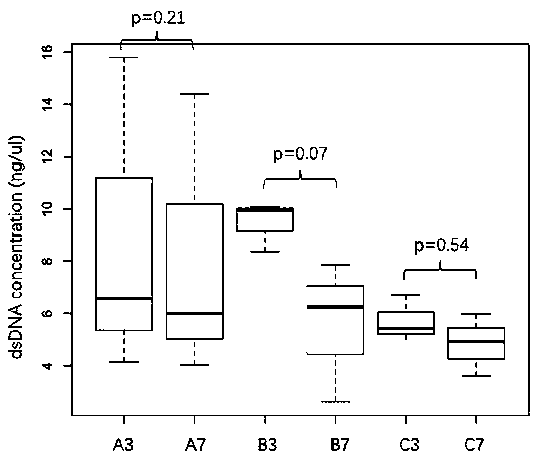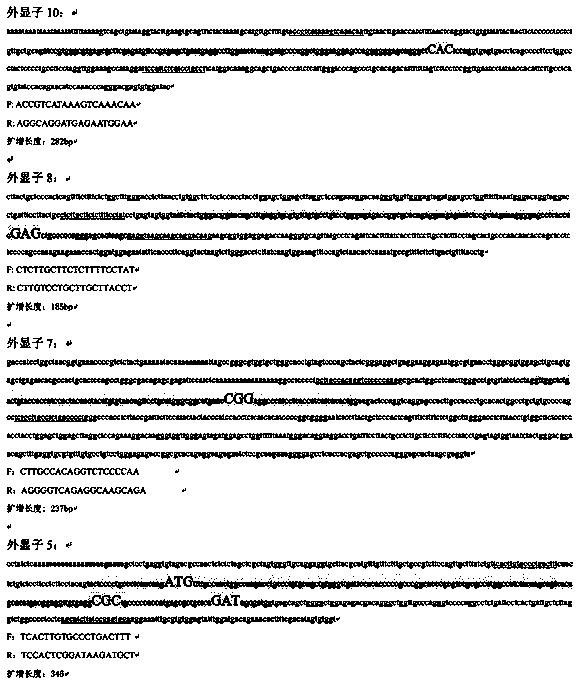Method for predicting cancer risk based on hereditary gene mutation
A hereditary and cancer technology, applied in the field of medical statistics, can solve problems such as complex models, unusable models, and no obvious advantages in prediction accuracy, and achieve the effect of improving statistical power and increasing sample size
- Summary
- Abstract
- Description
- Claims
- Application Information
AI Technical Summary
Problems solved by technology
Method used
Image
Examples
Embodiment Construction
[0049] In the following, the present invention will be further described in detail in combination with specific implementation cases of genetic mutation detection of TP53 gene, simulation experiment and real data.
[0050] 1. Assess the stability of saliva samples stored at room temperature: the specific steps and results are as follows:
[0051] (1) Collect saliva samples from three people. Each person collects about 4ml of saliva and divides it into four 2.0ml centrifuge tubes, each with 0.8ml. Add the following three saliva collection tubes to the centrifuge tubes. , mix well and put at room temperature;
[0052]
[0053] (2) At different time points (the third day and the seventh day after saliva collection), the DNA in the sample was extracted using column type saliva and urine genomic DNA extraction reagent (Sangon Bioengineering Co., Ltd.), and detected by Qubit dsDNA concentration in the sample. The results of gel electrophoresis and dsDNA concentration test were ...
PUM
 Login to View More
Login to View More Abstract
Description
Claims
Application Information
 Login to View More
Login to View More - R&D
- Intellectual Property
- Life Sciences
- Materials
- Tech Scout
- Unparalleled Data Quality
- Higher Quality Content
- 60% Fewer Hallucinations
Browse by: Latest US Patents, China's latest patents, Technical Efficacy Thesaurus, Application Domain, Technology Topic, Popular Technical Reports.
© 2025 PatSnap. All rights reserved.Legal|Privacy policy|Modern Slavery Act Transparency Statement|Sitemap|About US| Contact US: help@patsnap.com



